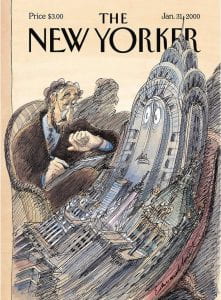
This website is a clearinghouse for the boundary language project but it also serves as a hub for collaborative efforts. Some studies are intentionally decentered to favor “ersatz” speculation into an assumed stable theoretical field. Ersatz conjecture is not intentionally mistaken or irrational. Conventional probabilities are suspended so that new connections can be made. Just as the idea of putting the Chrysler Building on the Analyst’s couch seems ridiculous, the question that buildings or other objects might have an unconscious is provocative and potentially productive, even if the premise is a bit wacky. For information or collaboration, contact kunze767@gmail.com.
items in the main menu, explained
• recent work
Ideas in the first stage, reconfigurations of previous work, collaborations and proposals. Published work is listed along with unpublished or web-published materials. For a summary, see PUBLICATIONS AND PROJECTS.
• current projects
Ongoing zoom sessions, publications, lectures, and workshops. This tab includes collaborative projects as well as the “zairja” idea that grounds the principle of ersatz conjecture. Scroll down to locate specific ongoing work.
• topology
What began as a plea from Sheldon George to make topology understandable to the “regular Lacanian” has gone through stages: (1) an analysis of the official inception of Lacan’s topological interest, Seminar IX, concluding with five essay contributions to an anthology in progress, (2) study of Seminars XIII and XIV in weekly zoom sessions beginning in 2021, and (3) the recent consolidation of topology around inversive geometry and the induction puzzle. These foundational topics allow the non-mathematician access to Lacan’s actual topological thinking, beginning in 1935 and offer “study method” using ethnology, folklore, religion, literature, film, music, poetry, and popular culture. It’s not about Grothendieck, Heisenberg, Bohr, van Neumann, or David Hilbert, but what ever could be? Praise be to the mathematicians! But, let’s remember that Lacan himself was not one (although he did his best not to tread on their toes). Let’s remember the arts of metalepsis and the religion of Hestia, and plow forward anyway.
• archive
Web documents and reprints of published works covering twenty-five+ years of teaching and research connecting architecture, landscape, film, philosophy, and psychoanalysis. Don’t overlook the work on the zairja, reputed to be the first computer. This tab includes the “Newslitters” circulated bi-weekly for PhD theory seminars at Virginia Tech’s Washington-Alexandria Architectural Center. Go here to find several foundational texts: Thought and Place, Atlas of the Obverse, and Secondary Places.
.• videos
The BoundaryLanguage YouTube channel (156 public videos in English, 12+ videos in Farsi, 2,845 subscribers) offers a means of front-loading presentational content for review by classes, conferences, zooms, and seminar conversations. Many of these were prepared for specific events, some without audio-track narratives. Recently, some video narrations have been translated into Farsi by Dr. Iraj Ghoochani.
• links
Links with brief descriptions: iPSA (institute for Psychoanalytic Studies in Architecture), zoom event pages, seminars, affiliated organizations. To learn the basics of projective geometry (≠ affine geometry), watch Norman O. Wilberger’s helpful videos.